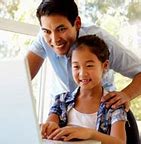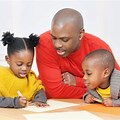
In this blog, dedicated to homeschools, you will find…
-
- Homeschool curriculum and literature that I am using to engage my boys in an education that reflects their multiple identities – rich identities that they have inherited but that are presently and historically undervalued as peripheral by our American society and schools
- Homeschool history curriculum that will promote a deep love for the contributions of nonwhite leaders and communities. This is something that I did not have growing up in predominately white-led, Christian educational spaces. The curriculum I focus on within this blog gifts children with a history that rejects the centering of white people as the dominant contributors in the formation of this great and beautiful country
- Teaching strategies that I use to capitalize on and encourage my boys’ natural gifts of humor, playful energy, and curiosity
- Strategies to facilitate conversations about race, racism, privilege, inequity, and joy… yes, joy, mercy, and justice
The idea of homeschooling had been brewing in my heart for a long time. This was due to the overwhelming academic fruit I observed in my incoming students who entered my classroom after having been homeschooled. The desire to entertain thoughts of homeschooling began to grow even more as I witnessed disparities in academics and disciplinary treatment between white and nonwhite students. However, the conviction to homeschool began to burn once I found that I could not protect my firstborn from the conscious and unconscious abuse of white racial bias and preference found in traditional American classrooms.
I remember watching a movie with my family one night, when my oldest son left the living room to use the bathroom. After he was gone for what seemed like a long time, I went to check on him. I found my sweet kindergartener in the hallway mirror frantically and vigorously brushing his hair and hard and as quickly as he could. I thought he was going to hurt his scalp. I bent down beside him and asked what he was doing. He said he needed to make his hair straight. I told him that I loved his tight curls, but he insisted that no one wanted his type of hair and instead everyone wanted straight hair. I asked him why he thought this, and he replied that straight hair was better because some of his classmates had it and so did his grandpa (my son is biracial – black and white). I thought it was peculiar for him to be fixated on the hair texture of the few white children in his class being that he went to a predominately nonwhite school.
At this moment, my husband entered the hall as my son returned to crying and frantically and angrily trying to rid himself of his curls. My husband looked just as surprised as I was and knelt down beside him and began a conversation about where he got his tight curls from. He explained to my son that his curls were like a crown and an honor given to him by his mother, his black grandparents, and his Nigerian culture and heritage. I shouldn’t have been surprised by my husband’s ease and ability to discuss the beauty of nonwhite ethnic attributes. After all, I know the man I married.
However, I was a bit surprised when my husband began a very direct yet age-appropriately worded conversation about how the overrepresentation of white people in media and books was not good because it ignored all the other kinds of people that God had made. He went on for a while, lovingly having an organic, antiracist conversation with our six-year-old to continue the life-long journey of decolonizing his young mindset already feeling overwhelmed and inadequate in a society that centers white standards of beauty. Never did my white husband attempt to minimize my son’s feelings or deny the reality of racism and its affect on our kindergartener. Because of years of taking a sincere interest in learning from nonwhite teachers, pastors, friends, and spaces and his own deep love for racial equity, my husband was not paralyzed by guilt, awkwardness, or discomfort. This wasn’t about my son’s hair style preferences. It was about racial hierarchies of beauty, and my husband was not about to let that snake devour his boy!
Now, I’ll be honest, as a black mama, with a whole family, church, and village of black folks who raised me, one reason why my husband had to step in was because he saw my eyes begin to lightly water as my heart was overwhelmed that my baby was having an almost panic attack because he didn’t have a white person’s hair texture. Yes, I’ve taught elementary-aged children for years, but I was just beginning to practice the ropes of parenting and still found it surreal that my baby was in “real” school” and encountering “real” life problems of any kind!
I was heartbroken that my child wanted to change himself to fit in with white friends and family. I’m sure none of my in-laws ever gave him this idea. That’s just not the way that they are nor the way that they raised my husband. My husband and I believe that this, in addition to many other occurrences like it before and after kindergarten were the result of an overrepresentation of whiteness in the books, television shows, movies, and curriculum materials he saw all around him. Even though he spent a substantial amount of his time playing with his uncles, aunts, and cousins who are of African descent, he was already learning the same thing that I and my own siblings had learned that “white is right,” and nonwhite is – well, peripheral and undesirable.
After some time and with many failed attempts to improve my children’s educational environments outside the home, I decided to reclaim and transform my children’s educational environments to one that would protect and promote the Imago Dei (image of God) within them, honoring their whole selves seamlessly woven throughout the theology, children’s literature, history books, and curriculum that would surround them.
I chose homeschooling because I realized that in most traditional classrooms my children would lose the opportunity to gain ethnic and cultural knowledge in Black, Hispanic, Asian, and Indigenous histories not to mention that they would lose their own natural concern and curiosity for injustice, poverty, and inequalities. In most traditional schools, they would not be skillfully taught how to identify systemic injustice nor given the agency to lead in conversations that change policies and actually do something beyond just peacefully and passively “loving our neighbors.” Having taught for years, I knew that my children would graduate even the best traditional schools of academic rigor knowing more about the accomplishments of white people than the accomplishments of various BIPOC communities. They would learn about racist forefathers and sexist white leaders and consider them American and spiritual heroes while knowing very little about American heroes that were female and/or of color.
VISIT OFTEN as new experiences, resources, and strategies are shared that will encourage and affirm your decision to homeschool. Even if your children attend traditional schools, for every family, right schooling starts at home by deepening and maximizing the conversations you have with your children and setting the tone and standard for their learning.

